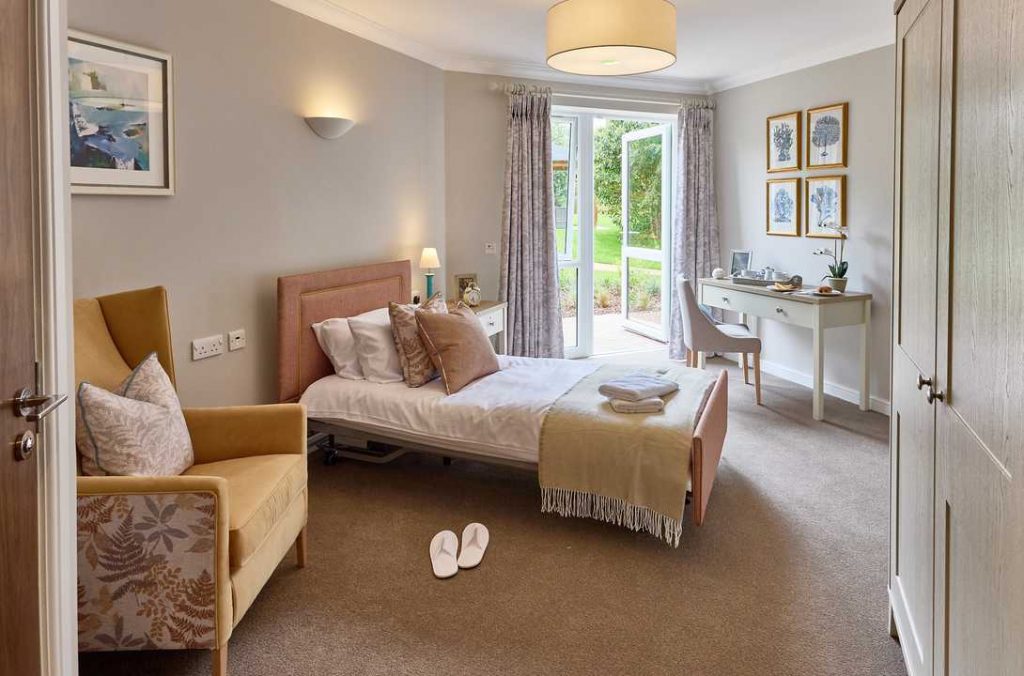Care Home Design Mistakes You Should Avoid
- Decluttering Spaces: Resist the temptation to overcrowd living spaces with unnecessary furniture and items. Excessive clutter can confuse residents and hinder navigation. Prioritize simplicity and only include essential items to meet residents’ needs effectively.
- Improving Lighting: Adequate lighting is crucial for residents, especially those with visual impairments. Maximize natural light to enhance visibility and mood stabilization. Ensure spaces are well-lit to support residents’ activities and provide a regular source of vitamin D.
- Simplicity in Design: Complexity in design can lead to confusion for residents. Opt for straightforward layouts with short, straight hallways and clear signage. Simplifying navigation within the care home minimizes confusion and enhances residents’ comfort.
- Choosing Appropriate Colors: Select calming colors like greens and blues, but avoid using too many colors simultaneously, as it can be confusing for residents, particularly those with dementia. Ensure furniture colors contrast with walls and floors for easy object identification and spatial orientation.
Construction and interior design can be extremely difficult at the best of times, but care home design carries with it its own set of challenges.
Given the nature of a care home’s occupants, you need to take special care during the design phase to ensure you don’t make mistakes that seriously impact their quality of life.
In this article, the Aedifice team will be covering some common care home design mistakes and how to avoid them, so you can have content residents from the outset.

How to declutter your care home
It can be tempting to fill living spaces with different kinds of furniture and other items in order to tend to the needs of residents, but in some cases, less really is more.
Too much clutter in a room can be confusing for residents and make the space difficult to navigate.
As a rule, only fill a room with exactly what you need to fulfil the needs of residents.
How to fix poor lighting in your care home
Lighting is extremely important in a care home setting due to the visual impairments of residents.
Making sure there is enough natural light in a space will mean that residents can clearly see what they’re doing and where they’re going.
It also means that they will have a regular source of vitamin D and a way to stabilise their mood.
Unnecessary complexity
In a care home, everything is about simplicity, and this extends to the way the building is designed. Hallways, rooms and communal areas that are difficult to navigate can cause great confusion, so keep it simple where you can.
This means sticking to shorter, straight hallways, as well as utilising clear and simple signage where possible.
How to choose the right colour for your care home
While choosing calming colours – such as greens and blues – can help during the care home design phase, the really important thing to note with colour selection is don’t mix too many of them all at once.
This is because too much colour variation in one place can be confusing for those with dementia.
However, at the same time it’s also important to make sure that furniture colours contrast sufficiently with the wall and floor.
This just means that residents can quickly identify what objects are and exactly where they’re located in the room.
Aedifice Partnership is a leading consultancy and project management firm specializing in delivering high-quality projects across various sectors, including care homes, residential properties, education establishments, and commercial properties.
Our range of services includes project management, chartered building surveys, CDM and quantity surveying among others.
Here at Aedifice Partnership, we manage new care home construction projects across the UK.
If you have a question for our team about care home design or you would like to enquire about our services all you have to do is give us a call!



